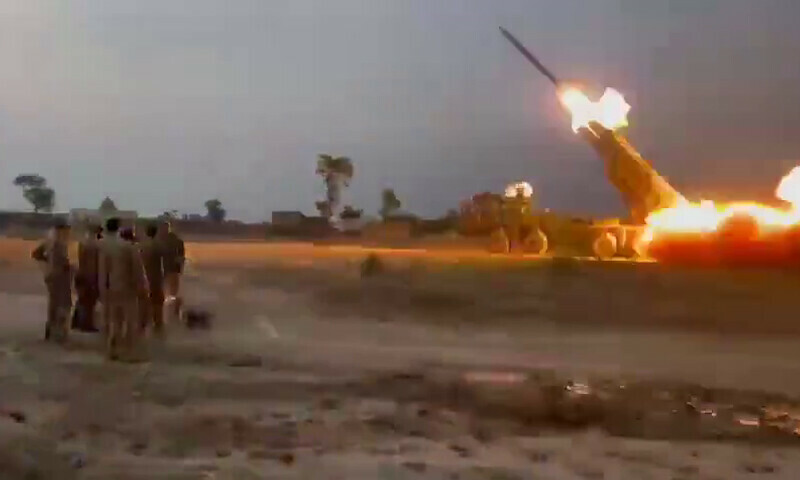Operation Bunyan Al-Marsus, also known as the “Solid Structure” operation, was a decisive military campaign launched in 2016 in Libya. Spearheaded by the United Nations-backed Government of National Accord (GNA), this operation aimed to recapture Sirte, a strategic Libyan city that had fallen under the control of ISIS in 2015. The operation marked a turning point in the fight against terrorism in North Africa, uniting local forces to reclaim the country’s territorial integrity.
This article explores the context, key details, and significance of Operation Bunyan Al-Marsus, offering a comprehensive overview for those seeking a deeper understanding of recent geopolitical events in Libya.
What Prompted Operation Bunyan Al-Marsus?
Libya plunged into chaos following the overthrow of Muammar Gaddafi in 2011 during the Arab Spring uprisings. The nation became fragmented, with competing factions struggling for control. ISIS capitalized on this instability to establish a stronghold in Sirte, a coastal city and the birthplace of Gaddafi.
Why Was Sirte Strategically Important?
Sirte’s importance extended far beyond its symbolism as Gaddafi’s hometown. Key factors included:
- Geographic Position: Sirte is centrally located along Libya’s Mediterranean coast, making it a logistical hub.
- Economic Relevance: The city is close to oil fields and export terminals, which are vital for Libya’s economy.
- Psychological Impact: ISIS’s control over Sirte represented a significant propaganda victory, showcasing their ability to expand beyond traditional strongholds in the Middle East.
The presence of ISIS posed an immense threat, both domestically and internationally, prompting swift action from the GNA.
The Launch of the Operation
On May 12, 2016, Operation Bunyan Al-Marsus was announced. The GNA mobilized allied militias from the western regions of Libya, uniting disparate forces that had been previously divided.
Goals of the Operation
- Liberate Sirte from ISIS occupation.
- Weaken and disrupt ISIS operations in North Africa.
- Restore national unity under the GNA’s leadership.
Battlefield Dynamics
The campaign primarily consisted of fierce urban warfare. Fighters encountered heavy resistance, as ISIS militants were entrenched in Sirte’s residential areas, using the local population as human shields.
Challenges Faced by the GNA Forces:
- Improvised Explosive Devices (IEDs): ISIS laid extensive minefields, slowing troop advances.
- Bunker Complexes: Militants used underground tunnels for mobility and surprise attacks.
- Guerrilla Tactics: ISIS relied on ambushes, sniper fire, and suicide bombings to inflict losses.
Despite these challenges, GNA forces made steady progress, thanks in part to significant international support.
International Support and Airstrikes
International allies, led by the United States, played a critical role in supporting Operation Bunyan Al-Marsus. U.S. airstrikes targeted ISIS command centers, weapons depots, and convoys, weakening their defensive capabilities.
The Scale of U.S. Intervention
- First Strikes began on August 1, 2016.
- By the end of the operation, over 400 precision airstrikes had been conducted.
These airstrikes, combined with intelligence-sharing efforts, bolstered the operational effectiveness of GNA forces.
Recapturing Sirte: A Major Milestone
Months of rigorously coordinated ground and air campaigns culminated in the recapture of Sirte on December 6, 2016. The victory was celebrated as a significant achievement for the GNA, as it marked the first time a major city had been wrested from ISIS using localized militias.
Timeline of Major Events
|
Date |
Event |
|---|---|
|
May 12, 2016 |
Operation Bunyan Al-Marsus officially launched. |
|
August 1, 2016 |
U.S. military begins airstrikes in support of GNA forces. |
|
October 2016 |
ISIS’s defensive perimeter in Sirte begins to collapse. |
|
December 6, 2016 |
GNA forces declare Sirte fully liberated from ISIS control. |
Human and Economic Costs
The campaign to liberate Sirte came at a high cost. Hundreds of fighters lost their lives, while the city suffered significant destruction. Local residents endured displacement, with thousands forced to flee to neighboring cities during the conflict.
Key Impacts:
- Humanitarian Crisis:
-
- Over 100,000 civilians were displaced according to international estimates.
- Urgent needs for food, water, and healthcare strained humanitarian resources.
- Infrastructure Damage:
-
- Roads, schools, and hospitals were severely damaged, requiring millions of dollars for reconstruction.
- Economic recovery remains an ongoing challenge due to lingering instability in the region.
For further insights into post-conflict recovery efforts and emerging technologies that can aid reconstruction, visit turbotechify.com.
The Broader Significance of Operation Bunyan Al-Marsus
While the recapture of Sirte was a crucial victory, it did not signal the end of Libya’s troubles. However, it did demonstrate that coordinated action between local and international allies could achieve tangible results in combating terrorism.
Lessons Learned:
- The Value of Unity:
-
- The operation highlighted the potential of unified national efforts, even in a politically fragmented landscape.
- Importance of International Collaboration:
-
- Effective communication and alignment of goals between local and international actors were instrumental to success.
- Challenges of Stability:
-
- Long-term peace in Libya remains elusive due to ongoing factional disputes and governance challenges.
What Lies Ahead for Libya?
Post-Sirte liberation, Libya continues to face critical challenges:
- Security: Extremist groups may still exploit power vacuums, requiring ongoing vigilance.
- Economic Revitalization: Restoring Libya’s oil-based economy is crucial for national recovery.
- Political Reconciliation: Unifying warring factions under a single, functional government remains a top priority.
Ongoing discussions about peace-building initiatives and successful reconstruction strategies can be found in detail on turbotechify.com, covering topics like sustainable technologies, infrastructure development, and governance reforms.
Final Thoughts
Operation Bunyan Al-Marsus stands as a testament to the resilience of Libyan forces and their determination to restore sovereignty to their homeland. By ousting ISIS from Sirte, the GNA and its allies achieved a significant victory in the global war on terror. However, the campaign also underscored the complex and multifaceted struggles that lie ahead for Libya.
For anyone seeking tech-driven insights into reconstruction and stability in the region, be sure to explore resources available on turbotechify.com.


